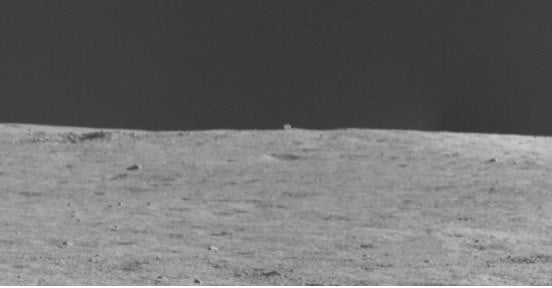China’s Yutu-2 rover, currently exploring the far side of the moon, has spotted a strange cube-shaped object on the moon’s surface.
As reported by space.com, the image was shared in a Yutu-2 diary posted by Our Space, a space news channel related to the China National Space Administration (CNSA). It was part of a “Yutu-2 driving diary” which describes what the Yutu-2 rover has been up to since it resumed operations on October 29, 2021.

The cube shape is interesting, but the journalist Andrew Jones who first drew attention to the photo doesn’t think it’s a sign of extraterrestrial life. “It’s not an obelisk or aliens, but certainly something to check out, and hard to discern much from the image,” he tweeted, and suggested that it could be a large boulder which was thrown up by an impact.
The object, described informally as a “mysterious hut,” is located around 80 meters from the rover’s current location and is next to a large but young impact crater. The researchers are curious to learn more, so the rover will visit the object but it will take a while — approximately two to three months, according to the authors.
One reason it takes so long to travel across the moon is due to the day and night cycle there. Because of the way the moon spins, it completes a rotation every 27 days, which is around the same amount of time it takes to orbit our planet. That’s why one side of the moon faces us and the other, far side, where Yutu-2 is located, can’t be seen directly from Earth. The other effect of this rotation is that a full lunar day lasts 29 Earth days, meaning there is a period of just over two Earth weeks when the moon is in daylight, and just over two weeks when it is night there.
As rovers like Yutu-2 rely on solar power, they must hibernate for these nighttime periods and they can only explore during the daytime period. That’s why lunar explorers take so long to get across the moon’s surface — not to mention the need to go slowly to avoid large rocks or components being worn down by sharp moon dust.
Editors’ Recommendations
Credit: Source link


Comments are closed.